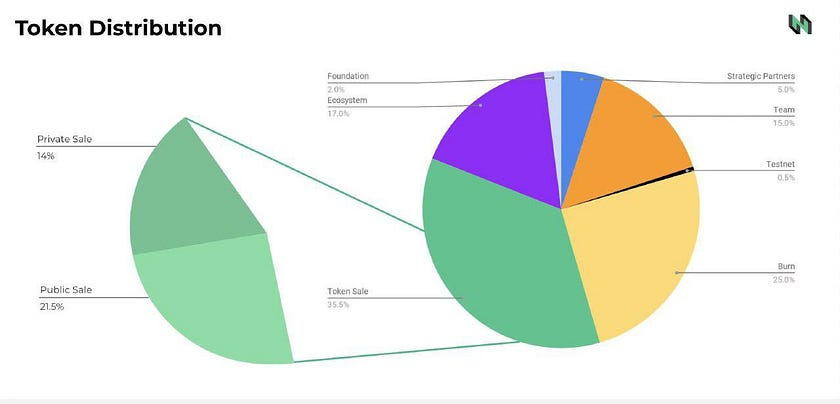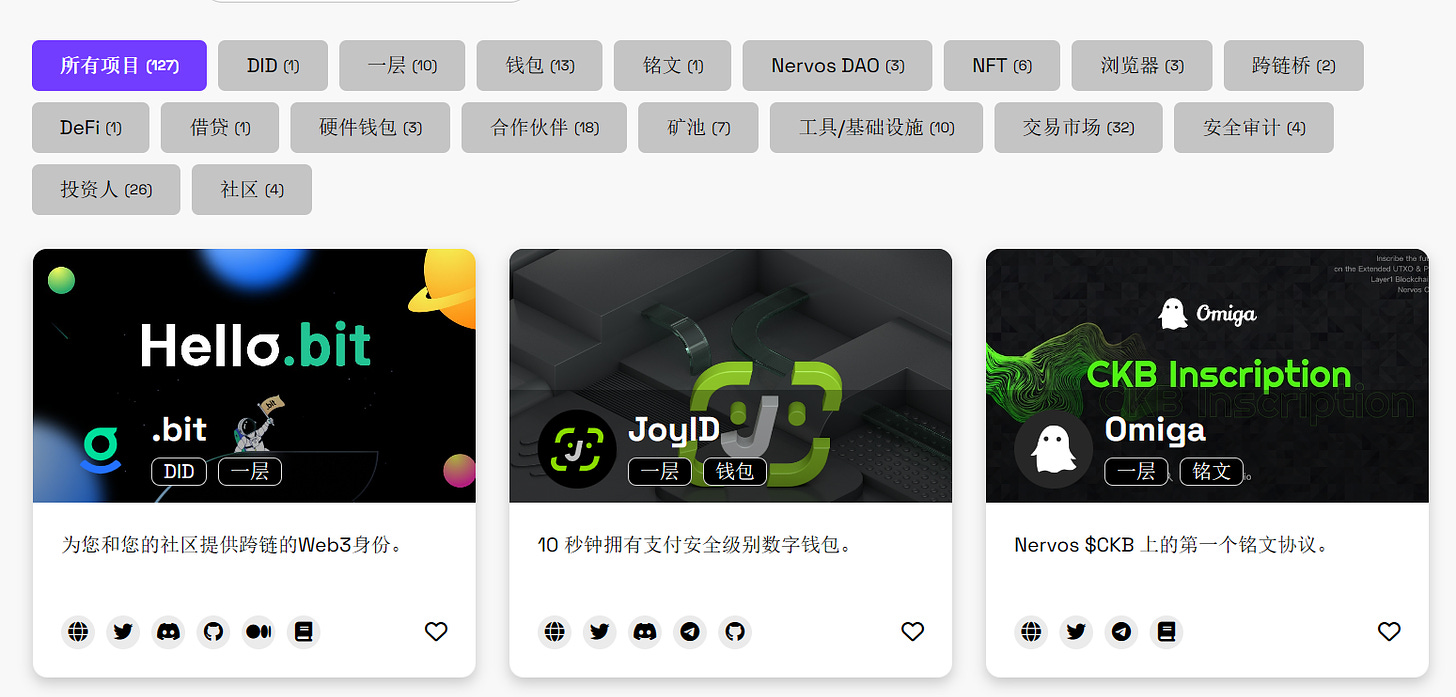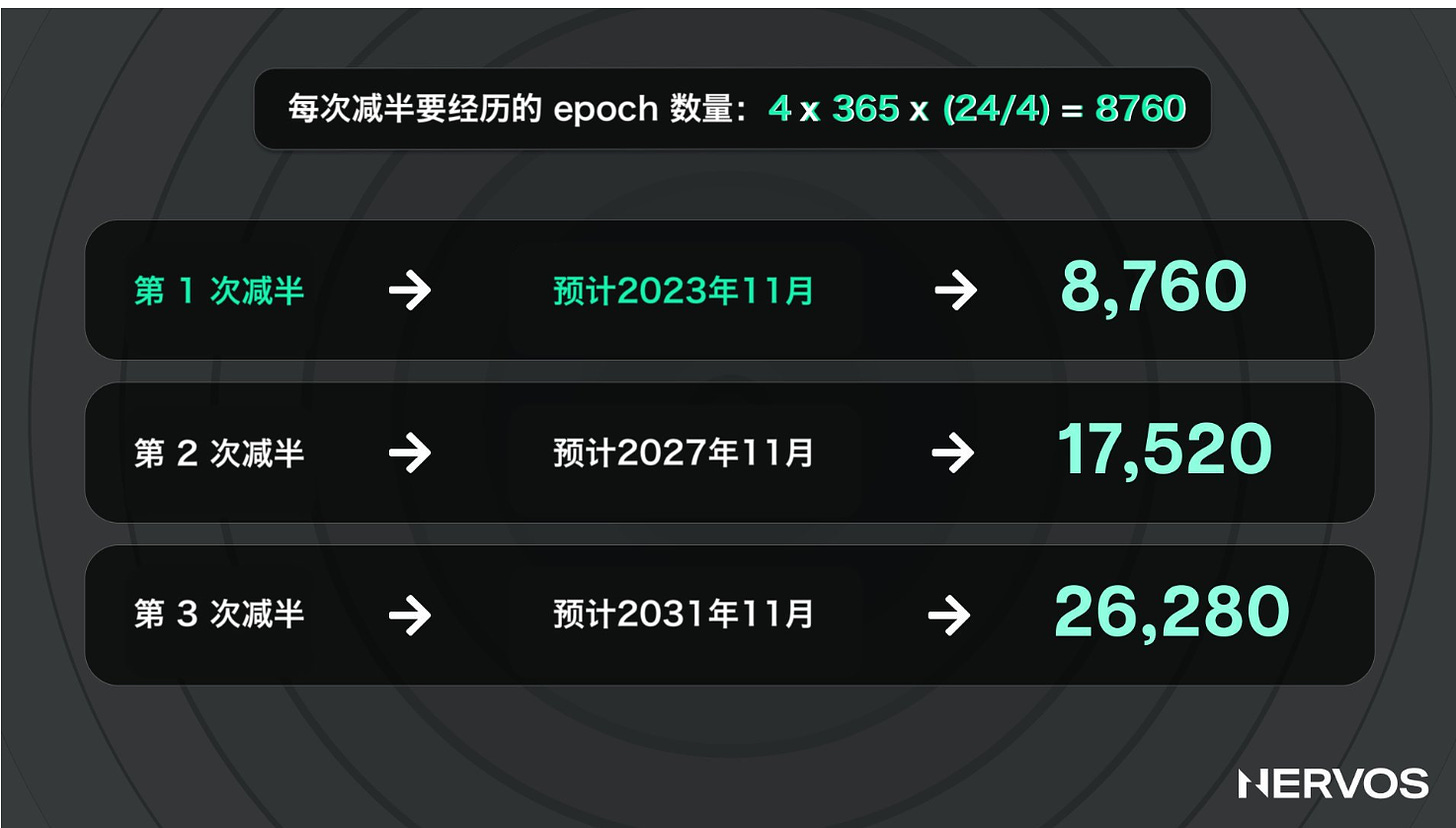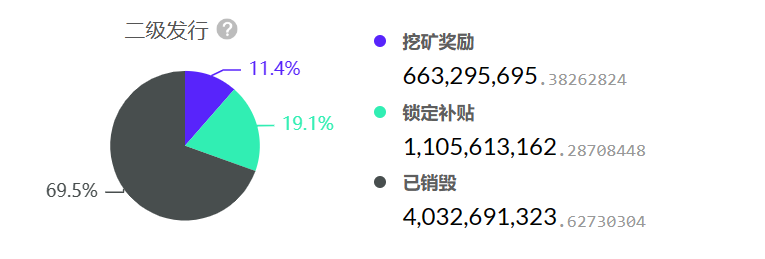With the launch of ETF, the explosion of BRC-20 ecology and the blessing of halving narrative, the market’s attention seems to be focused on the Bitcoin ecology again. In this context, CKB, as a veteran project in the public chain ecosystem, has also made frequent moves recently, announcing that after adjusting its main network positioning to Bitcoin Layer 2, it launched a layer of asset protocol RGB++. Leveraging the development momentum of Bitcoin Layer 2, coupled with its own UTXO + PoW orthodox BUFF, CKB quickly became a hot topic in the community.
However, before we delve into the concept of RGB++, why the CKB team chose the RGB protocol and how they plan the development of Bitcoin Layer 2, it is necessary for us to go back in time and learn more about the history, background and original intentions of CKB.
road to birth
In early 2018, when market attention was focused on the Ethereum ecosystem, CKB was officially launched. In July of the same year, CKB completed US$28 million in financing, with participation from many well-known investment institutions such as Polychain Capital, Sequoia China, Wanxiang Blockchain, and Blockchain Capital. Subsequently, on October 24, 2019, CKB completed an over-fundraising of US$67.2 million on Coinlist. On November 16, 2019, the CKB mainnet Lina was launched.
The team background of CKB is called a star team, and the founders have been deeply involved in the encryption industry for many years. Olaf, founder of Polychain Capital, also said in an interview that he is very optimistic about the background of the CKB team.
Chief ArchitectJan Xie : He has long been a contributor to the development of Ethereum clients Ruby-ethereum and pyethereum, and has also collaborated with Ethereum founder Vitalik Buterin to develop Casper consensus and sharding technology. In addition, he also founded Cryptape, a company engaged in underlying blockchain platform development and consensus algorithm research.
LianchuangKevin Wang : Worked on enterprise data solutions at IBM Silicon Valley Lab, and co-founded Launch School, an online school for software engineers. In addition, Kevin Wang is the co-creator of Khalani, an intent-driven centralized solver infrastructure. (Khalani is a versatile “collective solver” that can be seamlessly integrated into a variety of intent-centric applications and ecosystems.)
Lianchuang and COODaniel Lv: Ethereum wallet imToken Lianchuang, and the former chief technology officer of crypto exchange Yunbi. In addition, Daniel Lv has organized the Ruby China community for 10 years and co-founded ruby-china.org.
CEO Terry Tai: Was a core developer of the crypto exchange Yunbi and co-creator of the technology podcast Teahour.fm.
Interestingly, although the CKB founding team has close ties with the Ethereum community, they chose to inherit the Bitcoin UTXO + PoW model in their Layer 1 construction architecture. This is because the team recognized the limitations of Ethereum’s infrastructure. They realized that Ethereum’s architecture limited the overhaul of the entire system, preventing fundamental reconstruction and bold innovation. Therefore, the CKB team decided to take a different path from Ethereum and build a new blockchain.
On the other hand, the reason why the CKB team chose to rebuild a public chain may be inspired by the name Nervos. The word Nervos comes from Nerve, which also draws on Charles Darwins theory of evolution: Only species that adapt and flexibly adjust to changing environments can survive. It means allowing the network to self-adjust and evolve at the lowest level. . However, there is another theory about the origin of Nervos, because CKBs Lianchuang is also a lover of e-sports and animation, and the abbreviation of the United Nations Secret Service in the animation Neon Genesis Evangelion happens to be NERV.
In order to accelerate ecological progress, CKB has focused on development tools since early 2020, and has successively launched a series of tools, including the JavaScript/TypeScript-based framework Lumos, the Ethereum compatibility layer Polyjuice that allows the use of account models on CKB, and the connection between Ethereum and CKB Cross-chain bridge Force Bridge and dApp development kit Tippy, etc. These tools greatly lower the threshold for developing applications. Based on these tools, the CKB ecosystem has launched 127 projects, covering different tracks such as DID, wallets and inscriptions.
Going against the mainstream: What’s new about the CKB architecture?
In the context of the communitys widespread concern about TPS and PoS, CKB has chosen a technology route that is completely different from the mainstream. They insist there can be no compromise on censorship resistance and permissionlessness. Therefore, we chose to reduce L1 performance to maintain sufficient decentralization, and adopt improved PoW and simple hash functions to ensure the security and permissionless nature of the network.
layering concept
The reason for choosing a layered architecture is based on the teams reflection on the Internets operating model. The Internet has built a relatively stable trust network through a layered and decoupled architecture, but its trust level is limited and lacks the inherent support of a self-protection protocol. CKB’s ideal crypto-economic network infrastructure should also adopt a layered and decoupled architecture. This means defining the network by a set of protocols rather than just one, while providing native support for self-guaranteed protocols. Therefore, the team decided to build a secure and scalable layered network, where Layer 1 focuses on providing security and decentralization, and Layer 2 leverages the security of Layer 1 to provide unlimited scalability.
As Layer 1, CKB stands for Common Knowledge Base. Common knowledge is defined as knowledge that is common and widely known, that everyone or almost everyone knows and knows that everyone else knows it too. In the context of blockchain, common knowledge refers to a state that has been verified by global consensus and accepted by everyone in the network. This attribute also allows us to use cryptocurrency stored on the public chain as currency. Nervos CKB aims to store all types of common knowledge, not just currency. For example, it can store user-defined encrypted assets, including FT, NFT, etc.
Layer 2 protocols can use CKB to ensure security while providing unlimited scalability. The layered architecture proposed by CKB was later recognized by Ethereum. Ethereum gave up its previous research on execution sharding in 2019 and instead expanded its capacity with Layer 2 as the core, which continues to this day.
PoW mechanism ensures decentralization
CKB firmly believes that Layer 1 is the cornerstone of the encryption economy and therefore must be a permissionless network. In contrast, PoS determines the proportion of block production based on stake weight, which leads to a conflict with the goals of decentralization and neutrality. In contrast, PoW is completely permissionless, and users only need to purchase mining machines and electricity to participate in block production. In addition, in terms of security, it is extremely difficult to forge or reconstruct a PoW chain because the computing power of each block needs to be recalculated. Vitalik also coined the concept of weak subjectivity to explain that the security of PoS is no less than PoW.
Therefore, the CKB team believes that although PoS is indeed better than PoW in terms of performance, if you want Layer 1 to be as decentralized and secure as possible, PoW is more suitable than PoS.
Cell model achieves scalability
With the rise of the Bitcoin ecosystem, the debate between the account model and the UTXO model has once again attracted attention. In the early days, both models were interpreted around assets, but over time, UTXO still regards assets as the core (point-to-point), while the account model has evolved to serve contracts, and users’ assets are hosted in smart contracts. and interact with it. This results in the security level of assets issued on the UTXO chain being higher than that of ERC-20 assets issued on Ethereum. In addition to security, the UTXO model has better privacy. Each transaction changes the address and naturally supports parallel transaction processing. The most important thing is that unlike the account model, which performs calculation and verification on the chain at the same time, the UTXO model places the calculation process off-chain and only verifies it on the chain, thus simplifying the implementation of the application, which means that there is no need to consider it on the chain. optimization problem.
CKB not only inherited the ideas of Bitcoin architecture, but also abstracted the UTXO model and created the Cell model. While retaining the consistency and simplicity of Bitcoin, CKB has the ability to support smart contracts. Specifically, Cell abstracts the nValue field in UTXO, which represents the token value, and divides it into two fields: capacity and data. Data saves the state and can store any data. At the same time, the Cell data structure also contains two fields, LockScript and TypeScript. The former mainly reflects ownership, while the latter can customize many rich functions.
In summary, the Cell model is a more general UTXO model, allowing CKB to have smart contract functions similar to Ethereum. But unlike other smart contracts, CKB adopts an economic model for common knowledge storage, rather than an economic model designed for payment in decentralized computing.
High level abstraction
The concept of abstraction is no stranger to encryption users. It refers to removing the specificity of the system and creating universality, so that the system can be applied to a wider range of scenarios. The development from Bitcoin to Ethereum is actually an abstraction process. Bitcoin lacks programmability, making it difficult to build applications. Ethereum introduces virtual machines and operating environments, providing a platform for building various types of applications. Ethereum has also continued to abstract during its development process, whether it is the account abstraction that Vitalik mentioned many times, or the addition of precompiled cryptographic abstraction, etc.
Just like Ethereum is an abstraction of Bitcoin, CKB is also an abstraction of Ethereum to some extent, providing smart contract developers with more freedom.
1) Account abstraction
CKB implements account abstraction through the Cell model. For example, the Nervos ecological wallet UniPass has created an identity authentication system based on email and mobile phones. Users are able to log in via email and password, similar to traditional Internet accounts. The decentralized domain name protocol .bit developed by the decentralized identity service provider d.id team also takes advantage of the characteristics of the Nervos abstract account, allowing Internet users, Ethereum users, and EOS users to directly operate applications, not just limited to CKB user.
2) Cryptographic abstraction
At the heart of the cryptographic abstraction is an efficient virtual machine. CKB uses CKB-VM. With the characteristics of the RISC-V instruction set, CKB-VM allows developers to implement cryptographic algorithms using languages such as C and Rust. For example, the JoyID wallet built on CKB makes full use of the advantages of Nervos CKBs custom cryptography to create wallets and confirm transactions directly using biometric technologies such as fingerprints without passwords and mnemonics.
3) Run the abstraction
The goal of CKB is to build higher-level abstractions to improve performance and throughput. As the level of abstraction increases, the Nervos network is able to migrate more work off-chain or to Layer 2. For example, although XBOX is an abstract universal platform, there are still some limitations, such as the inability to change the hardware. PC allows users to replace hardware such as graphics cards, CPUs, memory and hard drives. Therefore the PC is a more abstract system. The goal of CKB is to transform from XBOX to PC to meet more needs and provide more convenience to developers.
CKB Economic Model Analysis: Mining Rewards and Inflation Mechanism
CKB’s native token is CKB (Common Knowledge Byte), which represents the global state of the blockchain that holders can occupy. For example, if you have 1,000 CKBs, you can create a Cell with a space of 1,000 Bytes, and use these 1,000 Bytes to store assets, application status, or other types of data.
CKBs economic model is very unique. In addition to halving mining rewards every four years (similar to Bitcoin), it also introduces an inflation design similar to mainstream PoS coins, with an additional issuance of 1.344 billion every year. As of now, according toCKBDAPPSStatistics show that the number of CKB issued is 44.379 billion, of which the circulating supply is 43.69 billion. The specific design is as follows:
1) Genesis Release:
A total of 33.6 billion coins were issued in the genesis block. In order to pay tribute to Satoshi Nakamoto, 8.4 billion CKB were deposited into Satoshi Nakamotos address at the beginning of the issuance. The remaining 25.2 billion CKB are allocated to institutional investors, ecological funds, development teams, public investors, etc., and have all been unlocked.
2) First level issuance:
The total amount of primary issuance is 33.6 billion. Similar to Bitcoin, halving occurs every four years until all primary issuance has been mined. Currently, CKB has undergone its first halving in November 2023, and the issuance has dropped to 2.1 billion CKB per year. The second halving is expected to take place in November 2027, and the issuance will drop to 1.05 billion CKB per year. All CKB issued in the first level will be rewarded to miners.
Specific distribution:
21.5% is used for the public token sale, all will be unlocked when the mainnet launches
17% is allocated to the ecosystem fund, 3% will be unlocked when the mainnet is launched, and the remainder will be unlocked within 3 years
15% is allocated to the Nervos team, with a four-year vesting period, and 1/3 will be unlocked when the mainnet is launched.
14% will be used for private placement in 2018, locked for two years
5% is allocated to the founding partners, locked for three years, and will not be circulated on the mainnet.
2% is used for the foundation reserve, which has been unlocked in July 2020 and will not be circulated on the main network.
0.5% is used for testnet incentives, providing rewards to testnet participants through mining competitions and bug bounty programs
The remaining 25% has been destroyed

3) Secondary issuance
In order to ensure that miners income sources are not affected by halving and on-chain transaction volume, CKB has introduced the concept of secondary issuance, with a fixed issuance of 1.344 billion CKB every year. The exact distribution depends on how CKB is used on the network:
Miners: Proportional to on-chain state occupancy
NervosDAO: Proportional to the proportion of locked CKB in NervosDAO to the total issuance
National Treasury: Proportional to the proportion of CKB in circulation to the total issuance. The current governance mechanism has not been perfected, and this part is directly destroyed.
Secondary issuance can be viewed as an inflation tax mechanism. That is, if a user needs to store data or status on CKB, he or she needs to pay a certain amount of CKB as state rent to the miners. If storage is no longer needed, CKB can be unlocked and stored in NervosDAO. Those holding users who have no storage needs can directly deposit their CKB into NervosDAO and receive subsidies to avoid the token value being diluted by secondary issuance.
according toCKB BrowserData shows that 11.4% of the secondary issuance tokens are used for mining rewards, 19.1% are used for lock-up subsidies, and 69.5% are allocated to treasury funds and destroyed.
Network computing power
CKB mining started on May 18, 2019, using the Eaglesong hashing algorithm. After March 2020, there is a gradual shift from CPU, GPU, and FPGA to ASIC mining machines. Currently, ASIC mining such as Antminer K 7 and Goldshell CK 6 is supported (the income from CKB mining with GPU and FPGA mining machines is too low to be profitable) .
Currently, the network mining computing power is 240.06 PH/s, and the mining difficulty is 2.31 EH. Currently supports CKBMining poolIncluding F 2 Pool, Poolin, 2 miners, etc.
Controversy continues, how do you view the new ideas of Bitcoin Layer 2?
On February 13, CKB LianCipher proposed the RGB extension protocol: RGB++. This move affected the secondary market price of CKB to a certain extent and triggered a discussion on the legitimacy of Bitcoin Layer 2. Some users believe that compared to the EVM compatibility faction, RGB ++ inherits the legitimacy of Bitcoin UTXO, and the team is deeply involved in the Bitcoin ecosystem, whether it is the layered architecture, UTXO abstraction, or the recently proposed OTX protocol CoBuild Open Transaction. Extension and innovation of Bitcoin ideas. However, there are also some views that CKB is positioned too much. From the cooperation with Huobi from 2019 to 2020, and the game direction from 2020 to 2022, no substantial progress has been made. Therefore, this shift to Layer 2 may be suspected of speculation. In addition, native Bitcoin developers also expressed their disagreement with the meaning of the RGB++ name, believing that there is a meaning of Better than RGB. At present, CKB has launched the RGB++ roadmap. How it will perform in the future may only be answered through the test of time.
Since the beginning of 2024, competition among Bitcoin Layer 2 solutions has intensified. However, no matter which solution is adopted, they have promoted the sustainable development and implementation of the Bitcoin ecosystem to a certain extent, and this competition may inspire more ideas and solutions. But fortunately, in this process, CKB seems to have always adhered to its original intention, insisted on being isomorphic with Bitcoin, and further bridged the shortcomings.
















